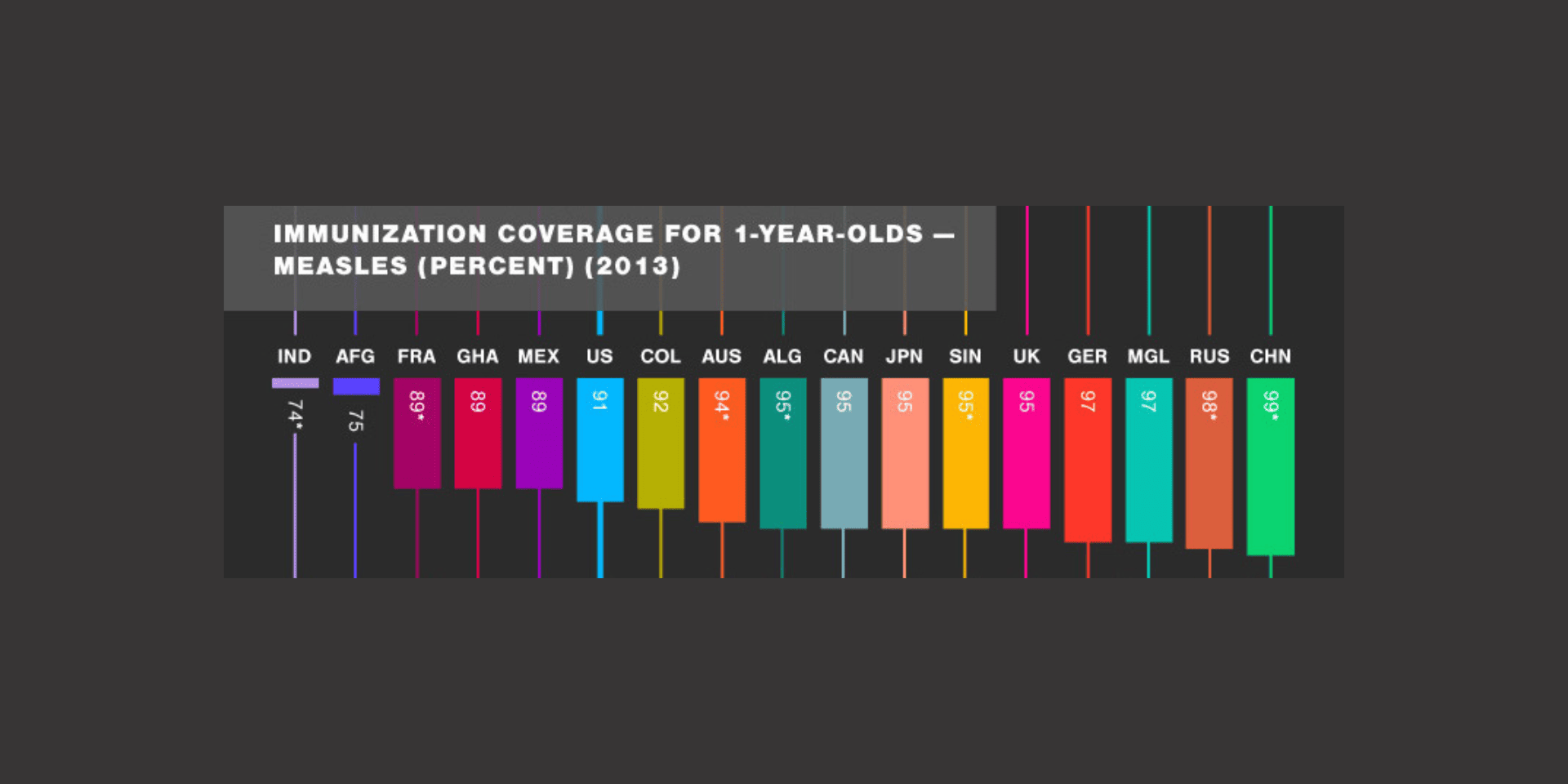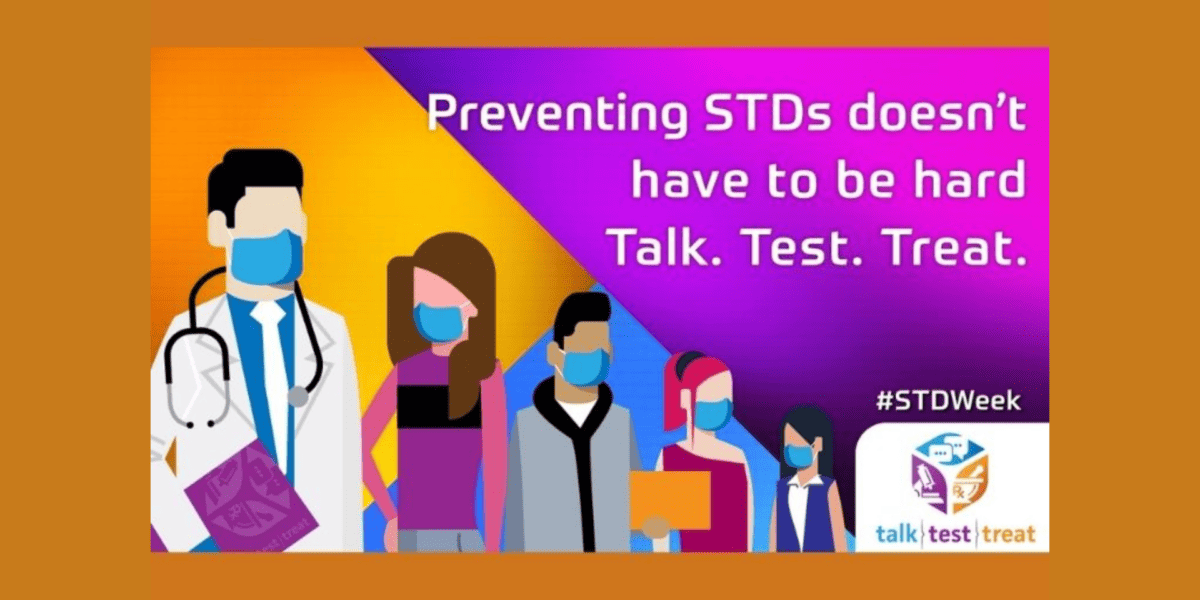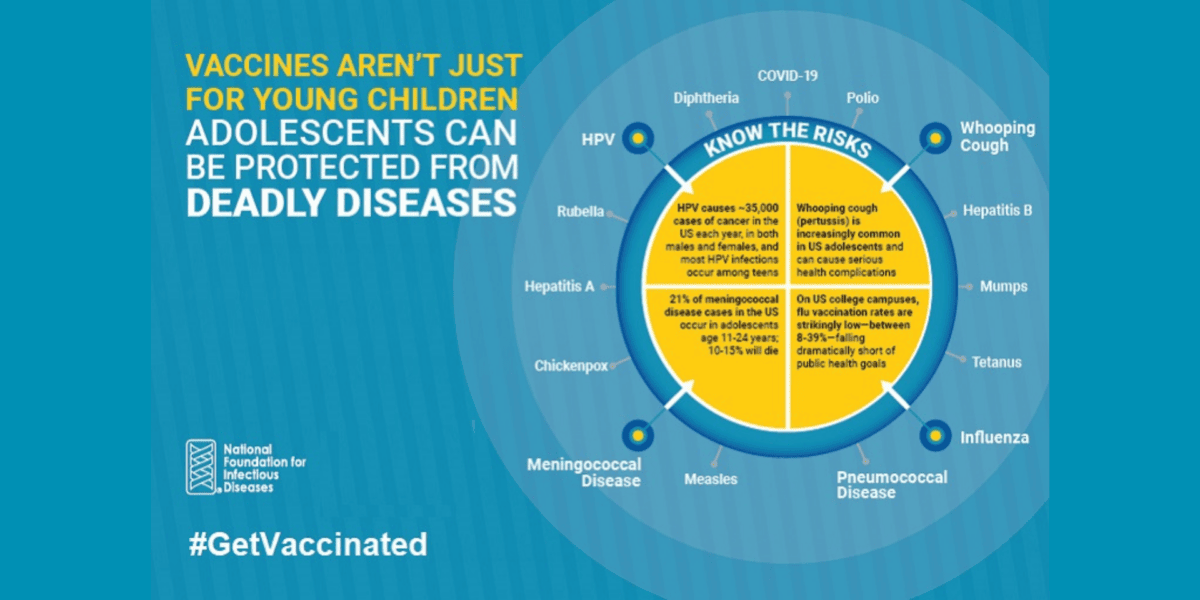
Special thanks to Julie Potyraj at the Milken Institute School of Public Health at the George Washington University for this guest blog post discussing the state of measles vaccination and herd immunity in the US.
When it comes to measles coverage, how does the US compare? The answer might surprise you…
Recently, the online master of public health program offered at the Milken Institute School of Public Health at the George Washington University (MPH@GW), developed an updated infographic comparing US healthcare to 16 other countries using key public health indicators. The analysis was based on data from the 2015 World Health Organization (WHO) World Health Statistics Report.

Though widely considered to be a world leader in healthcare, the US tends to fall behind in many of the categories despite 2014 estimates of $3 trillion in health spending (17.5 percent of the US Gross Domestic Product) – much more than other nations. Developed nations frequently perform better than the US in most of the categories explored; however, even developing nations surpass the US in certain areas. For instance, measles immunization coverage is a category that can help gauge how well a nation makes health services available to its population.
According to the World Health Organization, “although measles is no longer a leading cause of child mortality, measles immunization coverage is a useful indicator of the strength of immunization programs and of child health programs in general.”
The US has interesting history with measles. Before a measles vaccine was licensed in 1963, the disease sickened millions and killed hundreds every year. In 1971, the measles, mumps, and rubella (MMR) combination vaccine was licensed in the US. By the year 2000, the Centers for Disease Control and Prevention (CDC) declared that endemic measles had been eliminated from the US, largely due to more effective vaccination procedures and resources. However, just eight years later, new measles outbreaks were reported in the US, predominately the result of increasing numbers of unvaccinated individuals. US residents also remained at risk for infection from imported cases. More recently, there was a large multi-state outbreak in 2015 centered around unvaccinated individuals visiting a popular California amusement park.
So where exactly does the US stand?
Of the 17 countries compared, the US ranks just 12th in measles immunization coverage, with a 91% coverage rate. Countries like Singapore, Mongolia, Russia, and China – all of which spend significantly less than the US on healthcare per capita– are among those that boast higher coverage rates.
The Healthy People 2020 goal for children age 19-35 months for one dose of MMR is 90%, and 95% coverage level of two doses for children in kindergarten. While the US met these goals between 2008 and 2010, there are communities throughout the US which have lower MMR immunization rates in both children and adults. As a result of these population segments with lower rates of vaccination, unvaccinated and immunocompromised individuals, as well as children too young to receive the vaccine, are at risk of developing the disease. In fact, measles is so contagious that according to CDC, 90% of individuals who come into close contact with an infected individual will develop the disease if they are not protected.
To learn more about the importance of vaccination, read the Top Reasons to Get Vaccinated and view the full infographic, US Health Care vs. The World (2016).
To join the conversation, follow us on Twitter (@nfidvaccines), like us on Facebook, join the NFID Linkedin Group, and subscribe to NFID Updates.
Related Posts

Protecting Children as They Head Back to School
As school gets underway, experts from the National Foundation for Infectious Diseases (NFID) offer insights on childhood immunization

Lifelong Conversations about Sexual Health
Teen Health Week is April 4-10, 2022, and STD Awareness Week is April 10-16, 2022, both of which provide an opportunity for healthcare professionals to begin lifelong conversations with patients about sexual health and the importance of staying up to date on all recommended vaccines …

Vaccines Are Not Just for Young Children
CDC recommends vaccinations from birth to adulthood to provide a lifetime of protection. Yet many adolescents are not vaccinated as recommended, leaving them unnecessarily vulnerable. International Adolescent Health Week (March 20-26, 2022) is a perfect time to make sure that pre-teens and teens are up to date on all recommended vaccines …
